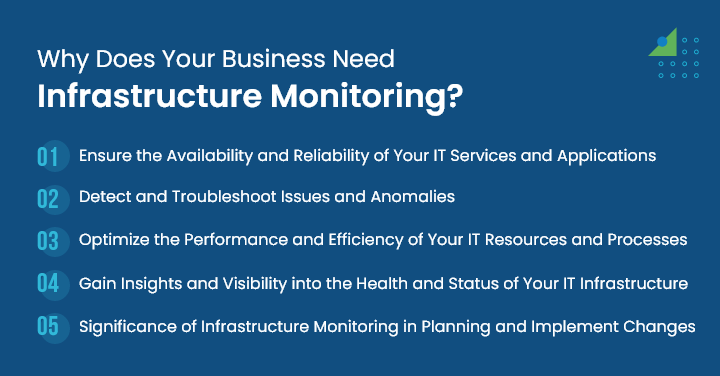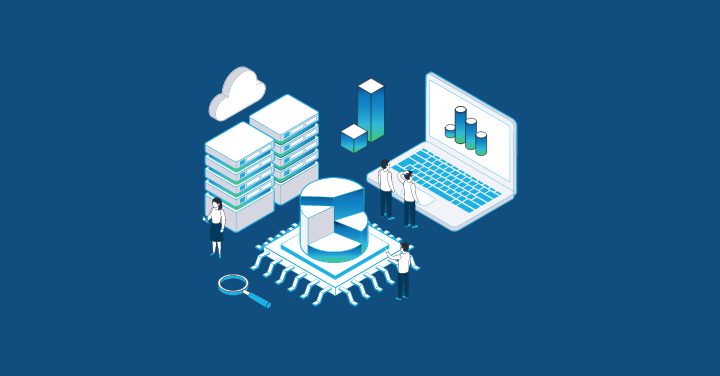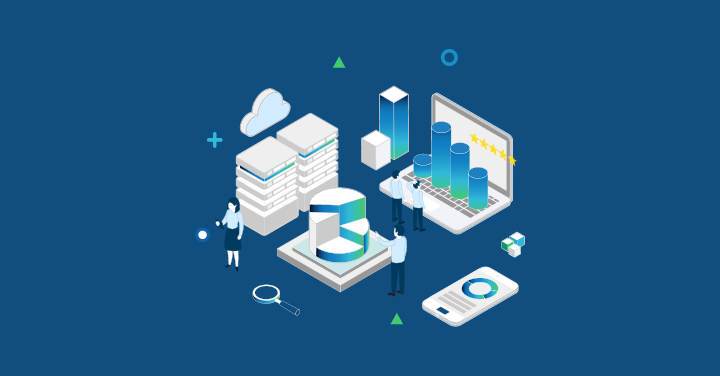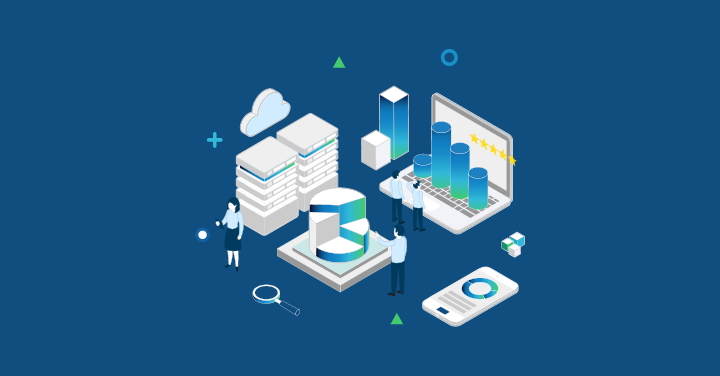In the initial stage of the digital era, only a few businesses were using digital tools and technologies to enhance their performance and efficiency.
But now, things have changed and almost 90% of businesses use top-rated technologies to stand out from their competitors.
In fact, some of them rely heavily on robust IT infrastructure for seamless delivery of quality service and applications. As a result, infrastructure is becoming more complex and open to threats.
Today, businesses cannot control the attackers but definitely the incoming threats and risks by incorporating monitoring tools.
This proactive approach will not only provide real-time insights into performance problems but further help businesses manage their complex infrastructure, network devices, and cloud services with ease.
With the right monitoring solution, businesses can further gain full visibility into the entire infrastructure and save on additional costs.
Let us dig deeper into the Significance of Infrastructure Monitoring and why businesses must invest in this proactive approach.
Infrastructure Monitoring and Its Significance
Only a healthy backend infrastructure allows a company’s services and apps to operate at peak efficiency.
Hence, to deliver the best performance, implementing infrastructure monitoring is essential.
With the help of this robust monitoring solution, businesses will be able to track the performance of each network, virtual machine, server, and application in real time and proactively resolve infrastructure problems.
It further helps businesses to run root-cause analysis into the performance issues detected and troubleshoot faster, resulting in improved user experience and customer satisfaction.
Further, engineers gain more free time to focus on other crucial matters when they use infrastructure monitoring software since the hardware and software components of these systems significantly cut down on the amount of manual work that IT teams must perform.
It even lessens the burden and reduces human error by automating all tasks.
Further, it allows users to keep track of all resources, including CPU utilization, memory utilization, etc., and make informed decisions.
Overall, the significance of infrastructure monitoring may reduce security risks and guarantee uninterrupted operations by effectively overseeing their complete infrastructure, encompassing cloud infrastructure.
Proactive management and capacity planning are aided by the implementation of this approach.
Why Does Your Business Need Infrastructure Monitoring?
Businesses that rely heavily on cloud services will be able to better keep track of their CPU, memory, and disk space usage, resulting in better delivery of backend and cloud performance.
Similarly, businesses that have complex network infrastructure can watch over the traffic and resource utilization, resulting in quick spotting of security risks and better service delivery.
In fact, infrastructure monitoring is crucial for DevOps teams and site reliability engineers because it helps prevent problems before they arise and promotes effective IT operations.
Overall, implementing an effective infrastructure monitoring approach is essential as it will guarantee better functionality and security of the entire infrastructure.
1. Ensure the Availability and Reliability of Your IT Services and Applications
Remember the case of the 2017 AWS outage in which due to some human error a wide range of websites and online services, including Slack, Trello, and Quora went to a halt.
The outage lasted for several hours, and it was completely unplanned. The point is that, at times, businesses face unplanned downtime that can happen for any reason.
In such a case, if you have an IT infrastructure monitoring tool like Motadata incorporated into your business, you can preemptively detect potential issues and troubleshoot them before it escalates.
Further, it ensures constant availability and reliability of all services and applications by monitoring their health status in real-time.
Thus reducing the chances of downtime and maintaining customer satisfaction.
2. Detect and Troubleshoot Issues and Anomalies Before They Affect Your Customers and Users
Infrastructure monitoring tools collect data from several sources, including log files, network devices, operating systems, physical and virtual servers, and applications.
It performs real-time monitoring and gains insights into the health of each IT infrastructure component.
With these insights in hand, it becomes easier for IT teams and business administrators to detect anomalies and unusual patterns, making it easier to address issues before they escalate and affect end users.
Businesses are able to resolve and troubleshoot issues at an initial state, leading to business continuity and improved customer satisfaction.
3. Optimize the Performance and Efficiency of Your IT Resources and Processes
The foundation of every successful business operation is efficiency, and it can be achieved by constantly monitoring resources, addressing potential issues, and leveraging tools like an AI business plan generator to troubleshoot before problems escalate.
This all is possible with the practice of infrastructure monitoring as it provides clear visibility into all the IT resources.
Be it server capacity, network traffic, network bandwidth, CPU usage, or any other resource information, you can track it all using this approach and maximize efficiency.
The tool makes it easier to pinpoint underutilized resources and bottlenecks, resulting in quick remediation and cost savings.
4. Gain Insights and Visibility into the Health and Status of Your IT Infrastructure
Unlike some of the other monitoring tools, the infrastructure monitoring solution provides comprehensive visibility into the entire IT infrastructure.
With clear visibility, businesses and IT teams are able to better understand the interdependencies between different components and system behavior.
These insights further help make well-informed decisions, pinpoint opportunities for enhancement, resolve network issues, and strategize to maximize infrastructure efficiency.
5. Significance of Infrastructure Monitoring in Planning and Implement Changes Based on Data-driven Decisions
Businesses share a lot of vital data via many channels every day as they engage and communicate with partners and customers.
Every organization can benefit greatly from the data gathered from various sources since it makes business operations easier to understand and enhance.
Infrastructure monitoring is one such approach that helps collect information on usage trends, system behavior, and system performance.
Using these data insights, users can make better business decisions and implement the changes that would promote growth.
Whether scalability of resources to meet increasing demand or configuration optimization for increased efficiency, this data-driven approach enables firms to plan and execute changes with precision.
Better results and a more robust IT infrastructure emerge from informed decision-making.
Conclusion
Infrastructure monitoring is not only a technical requirement but a necessity for the smooth operations of business.
The more businesses are expanding, the more complex their infrastructure will be resulting in higher chances of risks and security threats.
However, with the help of the right infrastructure monitoring solutions, businesses can address potential issues in real time across servers, networks, applications, and the entire infrastructure.
It will help users perform root cause analysis and troubleshoot issues before they escalate resulting in minimizing downtime and a better efficiency level.
For companies of all sizes, investing in a reliable infrastructure monitoring system is crucial, whether it is for keeping an eye on the health of servers, network speed, network performance, or application availability.
There are several monitoring tools available in the market but choosing the right one is essential.
Motadata is a popular AI-driven infrastructure monitoring tool that helps businesses keep track of all environments and deliver better business outcomes.
By investing in tools like Motadata, you can discover and monitor your services and applications in real time and stand ahead of competitors.
Today, many businesses are adopting this proactive monitoring strategy but what makes them stand out is their strategy and the ability to troubleshoot potential issues at an early stage.
There are several benefits of infrastructure monitoring such as this monitoring platform gives you useful information about your IT infrastructure, enabling you to plan ahead and efficiently use your resources.
Hence, by having a reliable infrastructure monitoring solution, you can maintain the seamless operation of your company.








